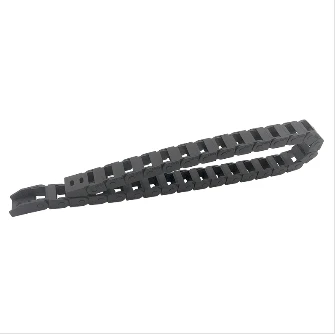synchronous belt vs v belt
Synchronous Belt vs V-Belt Choosing the Right Drive System
When it comes to power transmission in mechanical systems, choosing the right type of belt is crucial for efficiency, performance, and longevity. Two popular options are synchronous belts and V-belts, each with its unique features, advantages, and limitations. Understanding these differences is essential for making informed decisions, whether you're designing a new machine or maintaining existing equipment.
Synchronous Belts
Synchronous belts, often referred to as timing belts, are designed to engage with specific teeth on pulleys. This feature allows for precise synchronization between the driven and driving shafts, making them ideal for applications where timing is critical. Commonly made from rubber reinforced with materials like fiberglass or Kevlar, synchronous belts offer excellent durability and resistance to wear.
One of the primary advantages of synchronous belts is their capability to maintain consistent speed and position. This precision makes them indispensable in applications such as robotics, CNC machinery, and automotive timing systems. Additionally, synchronous belts operate with minimal noise and vibrations, contributing to a smoother running system. Their constant engagement with pulleys reduces slippage, enhancing overall efficiency.
However, synchronous belts also come with some limitations. They typically require more precise alignment than V-belts, which can complicate installation and maintenance. Moreover, if subjected to excessive heat or harsh environmental conditions, they may degrade faster than their V-belt counterparts.
V-Belts
V-belts, on the other hand, feature a trapezoidal cross-section that allows them to fit snugly into the grooves of V-shaped pulleys. This design enables a large contact area that helps in transmitting high levels of torque, making V-belts suitable for various applications, including fans, pumps, and agricultural machinery.
synchronous belt vs v belt

One of the most significant advantages of V-belts is their flexibility in terms of installation. They can accommodate slight misalignments between pulleys, making them easier to install and less sensitive to disturbances. V-belts are also generally less expensive to produce and replace, making them a cost-effective choice for many manufacturers and maintenance teams.
However, V-belts can be prone to slippage, especially under heavy loads. While they are excellent for applications requiring power transmission over short distances, their efficiency drops significantly when longer distances are involved. Over time, slippage can lead to increased wear and tear, causing reduced performance and potentially leading to unexpected failures.
Comparison and Application
When determining whether to use a synchronous belt or a V-belt, it is essential to consider the specific requirements of your application. If precision timing, reduced noise, and minimal slippage are paramount, synchronous belts are the way to go. They are particularly beneficial in high-speed applications or those involving complex machinery where accuracy is essential.
Conversely, if your application requires a robust, flexible solution that can handle slight misalignments and heavy loads, V-belts may be the preferred option. They offer greater adaptability, making them suitable for more straightforward, less demanding tasks.
Conclusion
In summary, both synchronous belts and V-belts have distinct advantages and disadvantages, making them suitable for various applications. Understanding the specific needs of your mechanical system—such as the necessity for precision, load capacity, environmental conditions, and budget constraints—will guide you in choosing the right belt for your needs.
Ultimately, the choice between synchronous belts and V-belts should be made with careful consideration of all these factors. Whether you opt for the precision of a synchronous belt or the flexibility of a V-belt, ensuring you have the right components can lead to improved performance, increased efficiency, and longer service life for your machinery. By making an informed decision, you can enhance your system's reliability while minimizing maintenance costs and downtime.








